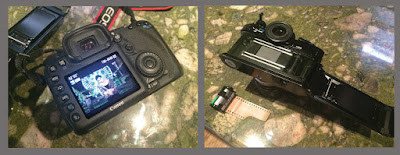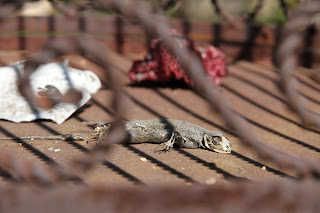Levon Parian
Art 151 (Photography As Art) Spring 2021
Office Hours: 12:15- 12:45 Tuesday & Thursday
e-mail: levon.parian.384@csun.edu
Art 151 (Photography As Art) Spring 2021
Office Hours: 12:15- 12:45 Tuesday & Thursday
e-mail: levon.parian.384@csun.edu
Blog: Art 151 News
Course Objectives
To provide a basic understanding of the principles of photography from an artistic perspective. Initial emphasis will be on technical understanding of the functions of the camera with its relationship to exposure and light. As the class progresses, the emphasis will shift to composition, design, intent, and subject matter. In this class, you will not be required to process film or make prints. (Available for General Education, Subject Explorations: Lifelong Learning)
Course Requirements
Text- A Short Course in Digital Photography by Barbara London & Jim Stone- for digital and film shooters.
An single lens digital reflex (DSLR) or mirrorless camera with manual controls is required for the class.
A minimum of six assignments will be handed in.
There will be a written mid-term exam on information from readings and lectures.
The final exam will be in the form of a slide or Power Point presentation.
Attendance and participation are mandatory.
Three tardies or two unexcused absences will drop your grade by 10 points.
No "incomplete" grade for no-shows.
Grading Breakdown
Following directions is an important part of the grade. I will give you a technical assignment and you need to complete it as requested. Then make interesting images that use the technique.
(100 points possible)
Assignments 70
Written test 15
Final Presentation 15
Final Grade Breakdown
A 93-100 A- 90-92
B+ 88-89 B 83-87 B- 80-82
C+ 78-79 C 73-77 C- 70-72
D+ 68-69 D 63-67 D- 60-62
Equipment and Supplies
Digital SLR camera with manual controls and working light meter.
Gray card
Tripod and cable release (optional).
Computer for downloading and sending images from your camera.
Photography Supply Stores
Freestyle / 5124 West Sunset Blvd, Hollywood 323-660=3460
Samy’s Camera / 431 South Fairfax Ave, Los Angeles 323-938-2420
585 Venice Blvd., Venice 310-450-4551
1759 E. Colorado Blvd., Pasadena 626-796-3300
4411 Sepulveda Blvd., Culver City, 310-450-4551
Assignments:
Grey card test: testing camera metering and exposure accuracy.
Looking at Light – shots from the same location at different times of day. With the concentration on shape, form, texture and color temperature.
Depth of Field – photographing single plain of focus by using aperture settings. Concentrating on Color and Composition to add depth.
Motion - capturing movement by adjusting shutter speed.
Portraiture- use of light and expression to bring out the unique qualities of a face.
Bulb – Creative use of long exposures.
Series – A series of images presented as a narrative or a non-narrative group.
Course Objectives
To provide a basic understanding of the principles of photography from an artistic perspective. Initial emphasis will be on technical understanding of the functions of the camera with its relationship to exposure and light. As the class progresses, the emphasis will shift to composition, design, intent, and subject matter. In this class, you will not be required to process film or make prints. (Available for General Education, Subject Explorations: Lifelong Learning)
Course Requirements
Text- A Short Course in Digital Photography by Barbara London & Jim Stone- for digital and film shooters.
An single lens digital reflex (DSLR) or mirrorless camera with manual controls is required for the class.
A minimum of six assignments will be handed in.
There will be a written mid-term exam on information from readings and lectures.
The final exam will be in the form of a slide or Power Point presentation.
Attendance and participation are mandatory.
Three tardies or two unexcused absences will drop your grade by 10 points.
No "incomplete" grade for no-shows.
Grading Breakdown
Following directions is an important part of the grade. I will give you a technical assignment and you need to complete it as requested. Then make interesting images that use the technique.
(100 points possible)
Assignments 70
Written test 15
Final Presentation 15
Final Grade Breakdown
A 93-100 A- 90-92
B+ 88-89 B 83-87 B- 80-82
C+ 78-79 C 73-77 C- 70-72
D+ 68-69 D 63-67 D- 60-62
Equipment and Supplies
Digital SLR camera with manual controls and working light meter.
Gray card
Tripod and cable release (optional).
Computer for downloading and sending images from your camera.
Photography Supply Stores
Freestyle / 5124 West Sunset Blvd, Hollywood 323-660=3460
Samy’s Camera / 431 South Fairfax Ave, Los Angeles 323-938-2420
585 Venice Blvd., Venice 310-450-4551
1759 E. Colorado Blvd., Pasadena 626-796-3300
4411 Sepulveda Blvd., Culver City, 310-450-4551
Assignments:
Grey card test: testing camera metering and exposure accuracy.
Looking at Light – shots from the same location at different times of day. With the concentration on shape, form, texture and color temperature.
Depth of Field – photographing single plain of focus by using aperture settings. Concentrating on Color and Composition to add depth.
Motion - capturing movement by adjusting shutter speed.
Portraiture- use of light and expression to bring out the unique qualities of a face.
Bulb – Creative use of long exposures.
Series – A series of images presented as a narrative or a non-narrative group.














































.jpg)
.jpg)







